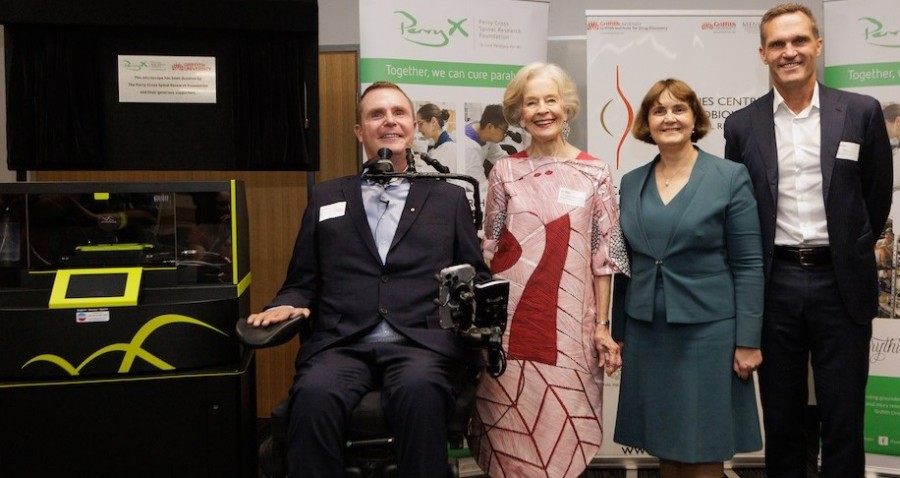Researching therapies for spinal cord injuries
20/08/2024

At a glance
> The Phasefocus Livecyte is being used by the Spinal Injury Project based at the Clem Jones Centre for Neurobiology and Stem Cell Research at Griffith University.
> The kinetic cytometer will perform critical cell analysis and develop a pre-screening process before cell transplantation and human clinical trials.
> The ability to image live cells in high-resolution to segment and follow the fate of every one is critical to ensuring that cells are healthy prior to patient transplant.
Performing critical cell analysis
The Clem Jones Centre for Neurobiology and Stem Cell Research at Griffith University in Brisbane, Australia is using the Phasefocus Livecyte kinetic cytometer to research therapies for spinal cord injuries. Professor James St John heads the Spinal Injury Project based at the centre with research funded by the Perry Cross Foundation. The project is looking to begin human clinical trials to test cell transplantation therapy and repair spinal cord injury, ultimately leading to restoration of function. The Livecyte will be used to perform critical cell analysis and develop a pre-screening process before cell transplantation and human clinical trials.

High-resolution live cell imaging
Livecyte’s high-resolution live cell imaging and ability to segment and follow the fate of every cell in the population is an asset to St John’s research, who said, “Livecyte allows for the identification of any cells exhibiting abnormalities or likely to cause complications such as tumour formation. By screening the cells that are prepared for the patient, and ensuring the cells are healthy, we can decrease the risk of adverse events for the patients.”
Livecyte’s analytical capabilities will lead to progress in pre-testing and understanding the phenotype of cells before therapy. It can measure several cell characteristics, including proliferation, motility, and morphology, completely label-free thanks to its Quantitative Phase Imaging (QPI). This is particularly important for sensitive primary cells which may be used for treatment purposes as cells remain undisturbed and additional fluorescent labels are not required.
Decreasing risk in cell transplantation
The research is building on key milestones already achieved as part of the Spinal Injury Project including the development of a 3D nerve bridge for transplantation and leading to successful outcomes of the intensive rehabilitation trials. Livecyte will bring the team one step closer in applying their cutting-edge research to making cell transplantation therapy for spinal cord injury an accessible treatment option for patients. St John said, "The Livecyte microscope will play a pivotal role in ensuring the safety of the cells used in the transplantation process.”
Find out more
You can learn more about the Phasefocus Livecyte by clicking the button below to speak to a product specialist directly.